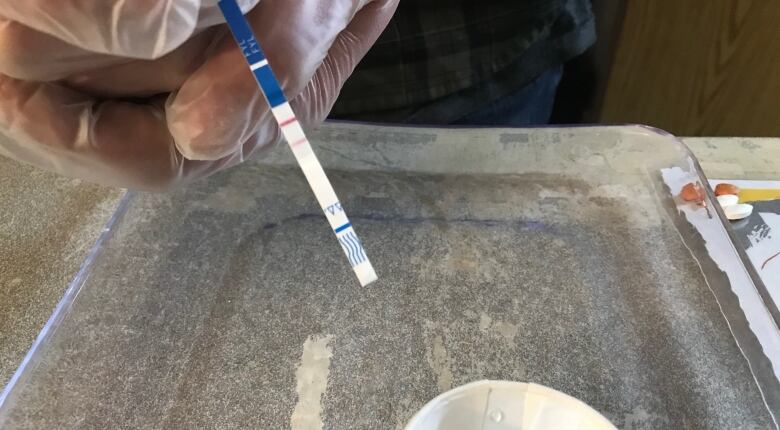No sign of permanent damage after Yellowknife woman's opioid overdose, doctor says at trial
Physician testified in trial of man accused of causing bodily harm for supplying furanyl fentanyl

The emergency room doctor who treated a Yellowknife woman who overdosed on furanyl fentanyl said she found no sign the woman suffered any permanent harm.
Dr. Jennifer Butler testified Wednesday in the trial of Darcy Oake. The 24-year-old Yellowknife man is facing four charges, including criminal negligence causing bodily harm, in connection with the overdose.
The prosecutor alleges Oake supplied the woman with the drugs she overdosed on.
Butler testified that the woman arrived at the Stanton Territorial Hospital emergency department just after midnight on Nov. 25, 2016, complaining of pain in her neck and buttocks and numbness in her legs.
Butler said the woman told her she had overdosed on fentanyl the day before.
Anything is certainly possible.- Dr. Jennifer Butler
"Initially it was a bit puzzling that she would be experiencing muscle pain after using a drug that only lasts for 20 minutes," said the doctor.
Butler later said illegally manufactured fentanyl can be entirely different from the drug used in hospitals, which is also typically administered in much smaller doses than what people who use the drug illegally take.
"Street drugs are rarely pure and often contaminated," Butler said, when asked about how people typically react to illegal fentanyl compared to fentanyl administered at hospitals. "Anything is certainly possible."
Earlier in the trial, the woman who overdosed testified she blacked out moments after snorting a line of furanyl fentanyl provided to her by Oake.
The woman said when she woke up on her couch more than a day later, she had to crawl to the washroom and, eventually, be helped to the hospital.

Referring to her notes on her examination of the woman, Butler said a blood test showed she had elevated levels of creatine kinase, an enzyme that is released when muscle tissue breaks down. The doctor said that would explain the muscle pain the woman was experiencing.
Butler said when a person is in a comatose state, they do not regularly shift positions as they do in their sleep. The constant pressure on the same muscles causes them to begin to break down. Once it begins, she said, that process can progress even after the person starts to move.
As a result,Butler said, she decided to keep her in hospital to rehydrate her and monitor her potassium levels.
Butler said the woman also had slightly elevated levels of carbon monoxide in her blood, a sign that she had not been breathing properly. Earlier in the trial, a toxicologist testified that fentanyl can block receptors in the brain that detect carbon monoxide levels in the blood and regulate breathing.
The toxicologist said people who overdose on the drug can stop breathing as a result, causing brain damage or death.
Butler said there was no indication that the woman who overdosed suffered any brain damage. However, she added that making a definitive determination would require a neurological examination or brain scans.












_(720p).jpg)


 OFFICIAL HD MUSIC VIDEO.jpg)
.jpg)



























































































